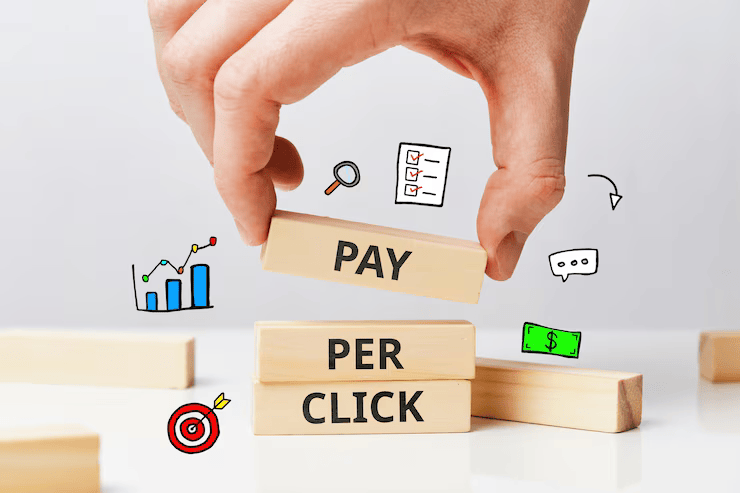Click-through rate (CTR) serves as a crucial benchmark in measuring how successful your Google Ads campaigns are. It tells you what percentage of people who view your ads are compelled to click on them. A higher CTR indicates greater engagement, stronger messaging, and improved targeting—all of which are vital to maximizing ad performance.
As highlighted by Storme Digital, a high CTR leads to better Quality Scores, lower cost-per-clicks (CPC), and more prominent ad placements, all of which contribute to a successful paid advertising strategy.

Why Click-Through Rate Matters More Than Ever
In Google Ads, CTR plays a pivotal role in determining how efficiently your budget is being spent. Here is why it deserves your attention:
- High CTR improves your Quality Score, which helps lower your ad costs.
- Google rewards relevant ads with better placements.
- Greater engagement leads to higher conversion opportunities.
- A strong CTR is often an indicator of audience satisfaction.
Low CTR can lead to wasted budget, poor placement, and lower return on ad spend.
1. Refine Your Messaging for Maximum Relevance
Effective ad messaging is all about clarity and value. Users should immediately understand what you are offering and why it matters to them. Start with a strong headline that includes targeted keywords.
Communicate benefits over features. Consider how your service addresses user needs and problems. Messaging that is tailored to the user’s intent will lead to more clicks.
2. Drive Action with Clear and Bold CTAs
Calls-to-action guide your audience toward conversion. Use action-oriented phrases that provoke urgency and clarity. Phrases like “Start Your Journey Today,” “Schedule a Free Demo,” or “Explore Solutions” tend to outperform generic prompts.
Ensure the CTA matches the landing page offer. If your CTA promises a free audit or discount, the next step should deliver exactly that.
3. Build Seamless Ad-to-Landing Page Experiences
Alignment between your ads and the landing pages they direct to is essential. When a user clicks your ad, they should land on a page that reflects the same offer, message, and tone.
This coherence builds trust, reduces bounce rates, and increases the likelihood of conversions. Ensure your landing page is easy to navigate, fast-loading, and mobile-responsive.
4. Extend Your Reach with Google Ad Extensions
Ad extensions increase the real estate of your ad and offer users additional information or options. Incorporate site link extensions, callouts, and structured snippets to drive engagement.
If your business provides pay-per-click in Gurugram, make sure to include call extensions and location links. These enhancements add credibility and improve accessibility for potential customers.
Use custom extensions to emphasize value points like “Instant Support,” “No Setup Fee,” or “Expert Consultants.”

5. Optimize Every Ad for Mobile Devices
The mobile-first environment requires mobile-optimized ad strategies. Ensure your headlines are short and impactful, and landing pages are quick to load with clear navigation.
Avoid heavy visuals and unnecessary form fields on mobile. Simplicity and speed are the keys to high mobile CTR.
6. Continuously Test Your Ad Variants
Split testing or A/B testing allows advertisers to experiment with different ad elements. Try various headlines, descriptions, and CTA formats to see what resonates best with your audience.
Analyze performance data regularly. Even small modifications—like rephrasing a line—can lead to significant improvements in CTR over time.
7. Define and Segment Your Audience for Precision
Accurate audience segmentation ensures your ads reach people who are most likely to convert. Use Google Ads tools to segment by demographics, interests, buying behavior, and custom intent.
Personalize your ad content for each audience group. Segmentation allows you to tailor your approach and speak directly to specific user needs. Discover more tips to enhance your targeting strategy.

8. Eliminate Wasteful Traffic with Negative Keywords
Negative keywords help refine your traffic by filtering out users who are unlikely to convert. Review your search term reports often and exclude irrelevant terms.
This approach sharpens your audience reach, improves CTR, and ensures that your ads are only shown to users with high conversion potential.
9. Strengthen Your Ad Rank Through Optimization
Ad Rank affects where and how often your ads are displayed. It is influenced by your Quality Score, bid amount, expected CTR, and landing page experience.
Focus on improving ad quality, optimizing page performance, and enhancing extensions. A higher Ad Rank improves CTR and helps reduce overall advertising costs.
10. Use Dynamic Keyword Insertion (DKI) with Caution
Dynamic Keyword Insertion enables your ads to appear more relevant by incorporating the exact terms users search for. This personalization can significantly improve CTR.
Be cautious with DKI to avoid awkward phrasing or misleading content. Always include a fallback copy to maintain coherence and relevance.
Final Word: Elevate Your CTR with Strategic Enhancements
Boosting your CTR requires more than just surface-level changes. It involves a comprehensive strategy combining creative, technical, and analytical efforts. From compelling ad copy to laser-focused targeting and optimized landing pages—each component plays a role.
If your campaigns are falling short, a strategic partner can guide you toward measurable improvements. For high-performance Google Ads support, contact us and take your digital advertising to the next level.